Practice Point: Tree Posture
Think about a tree. What qualities come to mind?
Strength? Stability? Resilience, the ability to weather all the extremes? Think of these qualities when you practise Tree.
Tree posture (vrksasana) is one of the most accessible balancing postures. It can be performed standing, or sitting in a chair, or even lying down.
It helps improve physical strength and stability, and promotes mental balance, and can be performed nearly anywhere. Try it while you’re waiting for the kettle to boil or during commercial breaks on television!
Before you begin ...
Be cautious if you:
- Have problems with your balance
Stand near a wall or practise from a seated or lying down position.
- Are pregnant
After your first trimester, consider practising from a seated or a side-lying position
Have a chair, blocks (or something similar like books, saucepans, footrests), blankets and cushions available.
The practice
Tree can be performed standing, sitting in a chair, lying supine on the floor (or bed), or lying on your side.
Standing
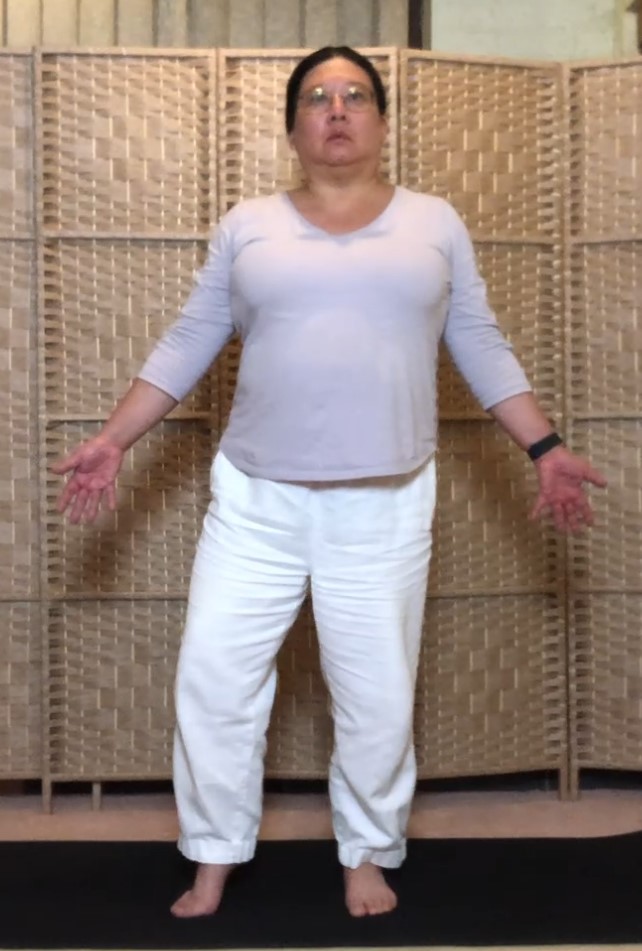
- Start in Mountain posture, feet a comfortable distance apart and hands by your side.
- Look for a steady point on which to focus and transfer your weight to your left foot. Feel that you're pushing the ground away with your left foot.
- Raise the right heel and, moving from your hip, turning the right knee out.
- Choose an arm position:
- Keep your hands to the side and gently rotate from the shoulders to turn the palms forward and out.
- Bring the palms together in front of the heart.
- Raise the arms overhead with the palms together or apart.
Or try any variation or combination that feels right for you.
- If you feel steady, you might like to do one or both of the following:
- Bring the right foot closer to the left leg.
- Take the right foot higher by placing it on a block or higher up your left leg.
- Hold the position for as long as you wish, and ensure you're breathing!
- When you're ready, slowly come back into Mountain before moving to the other side.
Sitting in a chair
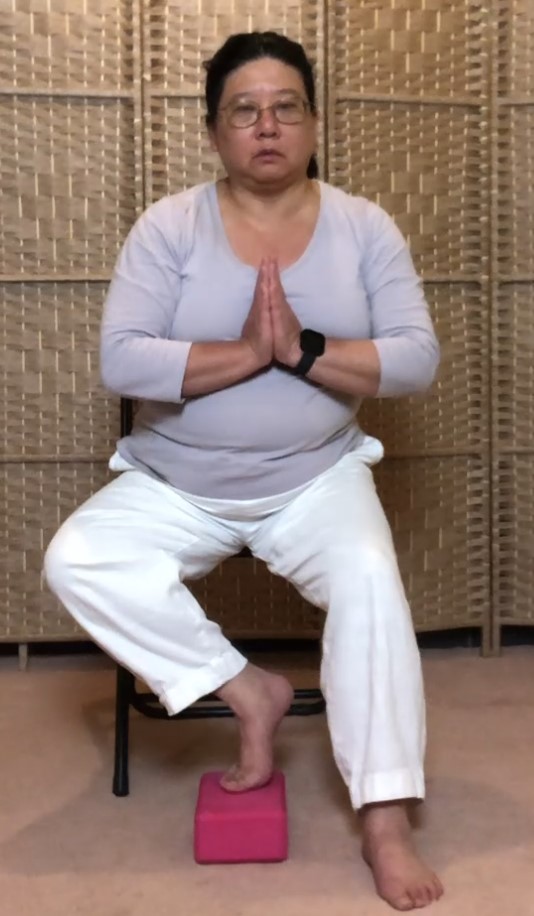
- Start in Mountain posture:
- Sit towards the front of your seat.
- Have your feet a comfortable distance apart and place them flat on the floor (or on something like a blanket or foot rest).
Adjust the position of your feet so that it feels your weight is evenly distributed forward and back and across your feet.
- Raise the right heel and, moving from your hip, turning the right knee out.
Adjust the position of your right foot so that you feel steady.
(Personally, I feel steadier when I bring my right foot back in line with my hip.) - Choose an arm position:
- Keep your hands to the side and gently rotate from the shoulders to turn the palms forward and out.
- Bring the palms together in front of the heart.
- Raise the arms overhead with the palms together or apart.
Or try any variation or combination that feels right for you.
- Lengthen through your spine and gently lean forward.
- If you feel steady, you might like to do one or both of the following:
- Bring the right foot closer to the left leg.
- Take the right foot higher by placing it on a block or against your left leg.
- Hold the position for as long as you wish, and ensure you're breathing!
- When you're ready, slowly come back into Mountain before moving to the other side.
Lying supine
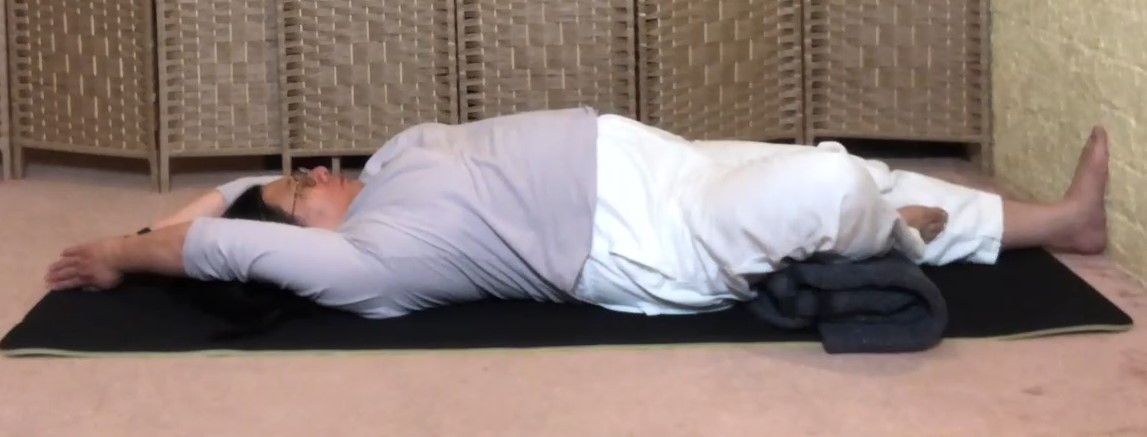
- Start in Shavasana, lying on your back with the hands by your side.
Your legs might be straight or the knees bent with the feet flat on the floor or bed.
If your left leg is extended, flex the ankle as if you're placing the foot against the wall. You might like to place the foot against the wall or bed head.
- Bend the right knee and let the knee fall out to the right.
You might like to do one or both of the following:
- Bring the right foot closer to the left leg.
- Take the right foot higher towards your buttocks.
Consider placing cushions or blankets under your right knee, to let the hip relax into this position.
- Choose your favourite arm position:
- Keep your hands to the side with the palms face up.
- Bring the palms together in front of the heart.
- Bring the arms above your head with the palms together or apart.
Or try any variation or combination that feels right for you.
- Push your left foot against the floor or wall and feel that you're lengthening through your body.
- Hold the position for as long as you wish, and ensure you're breathing!
- When you're ready, slowly come back into Shavasana before moving to the other side.
Lying on your side
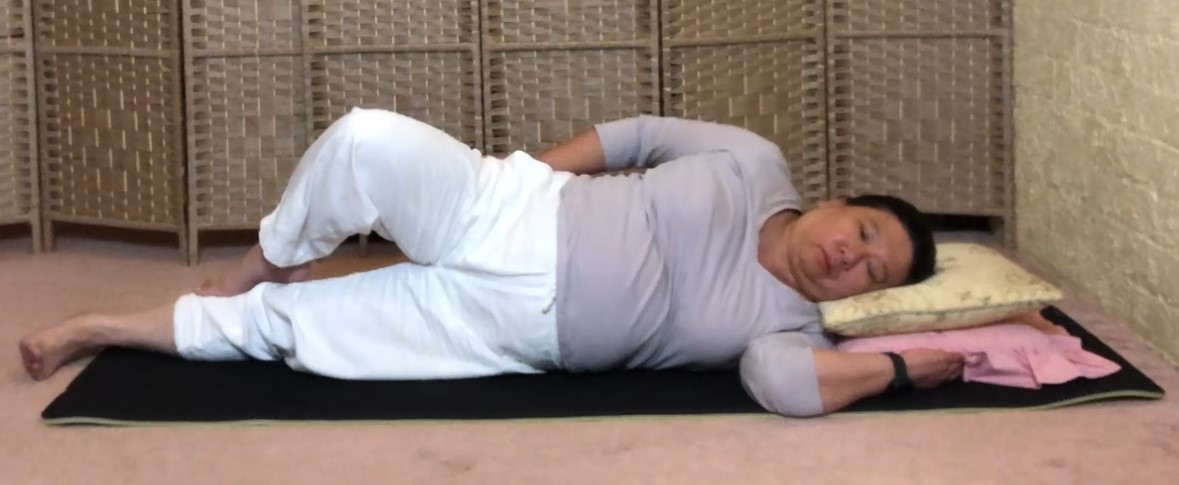
- Lay down on your left side.
Ensure that your head is supported with a pillow or your arm, and the spine feels long.
Your legs might be straight or the knees bent.
If your left leg is extended, flex the ankle as if you're placing the foot against the wall. You might like to place the foot against the wall or bed head.
- Bend the right knee and, moving from the hip, take the right knee towards the ceiling.
Place the right foot on your left leg, anywhere that feels steady.
- Choose your favourite arm position:
- Right arm remains in front of your body.
- Right arm rests along the right side of your body or extends above the head.
Or try any variation that feels right for you.
- Feel that you're balancing along the left side of your body.
If your left leg is extended, push the left foot against the wall.
- Hold the position for as long as you wish, and ensure you're breathing!
- When you're ready, rest on your back or front before moving to the other side.
Variations
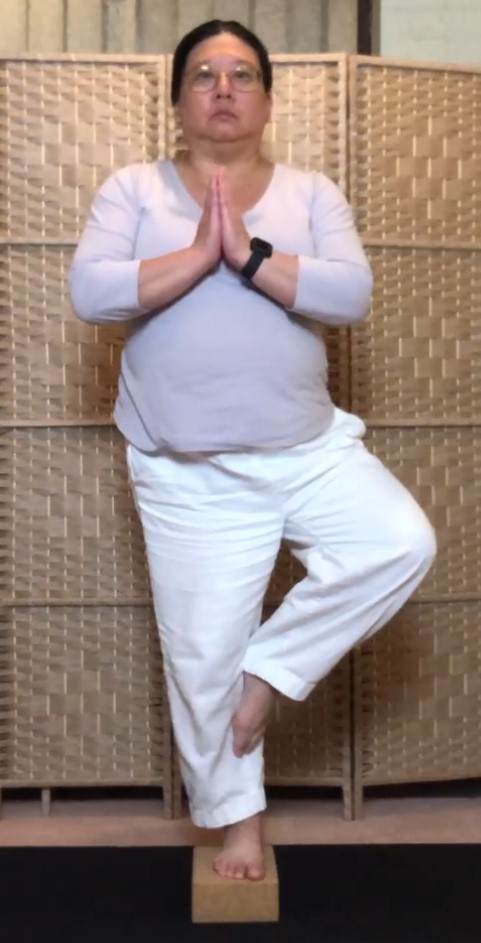 Standing variation:
Standing variation:- Stand on a block or step to increase the sense of pushing into the ground with the standing foot.
- Standing/seated balance variation:
- Balance a block or book on your head.
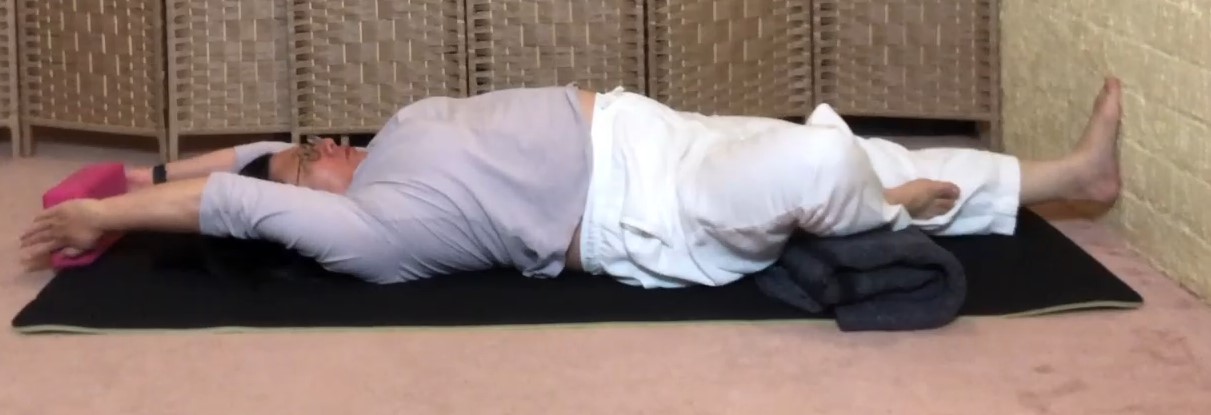 Arm strengthening variation:
Arm strengthening variation:- Hold a block between your hands and press the palms towards each other.
- Flowing tree:
- Start in Mountain or Shavasana.
Note: To do the flowing tree from a side-lying posture, do all the arm movements with the upper arm and a number of rounds on the one side before moving to the other.
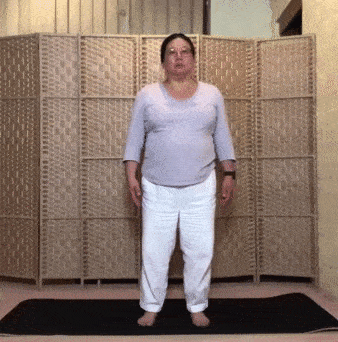
- Inhale. Take the arms out to the side and above the head, turn the right knee out and come into Tree with the arms overhead as high as comfortable.
- Exhale. Bring the palms together, lowering the hands in front of the heart.
- Inhale. Turn the fingers away from the body, and straighten the arms in front.
Separate the palms opening the arms to the sides. - Exhale. Lower the arms and the leg, coming back to your starting position.
- Repeat on the other side, continuing to alternate from side to side.
Benefits
Strengthens the feet, legs, and trunk muscles
Opens the hip
Improves balance both physically and mentally
Helps develop postural and body awareness
Calms the mind
The flowing tree variation can help:
Relieve stress
Improve focus
Develop a sense of ‘going with the flow’
